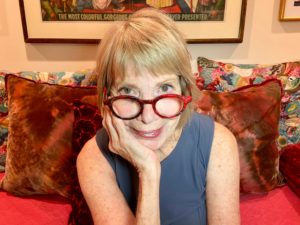I live in a house built in the 1800’s, so you’d think it would be easy for me to imagine the life of the 19th century character in my new novel Long Shadows. Tom Smiley is now a ghost in his boyhood home of the same vintage who is so deeply scarred by his time as a Confederate soldier that even death hasn’t brought freedom from his memories. Right off the bat, I had three challenges: I’m female, I’ve never been a soldier, and I’ve never been a ghost, thank goodness. Not to mention that I’m writing more than 150 years after the main action of the story. Here’s how I dealt with the challenges of creating historical characters:
1. The Obvious: General Research
At the start, I knew the time period and setting: the years of the Civil War in the mountains of southwestern Virginia. And I knew the overall situation: an immature and impulsive young man enlists in the Confederate army. The story would follow the terrible things asked of a soldier fighting for a cause he ceases to believe in and the ark of coming to grips with that experience. That’s all I knew.
Reading the most recent non-fiction Kindle books on the Civil War and the teetering stack by my desk gave me plenty of information to ground my novel. I spent hours in historical society libraries. I explored the internet for references to battles in Virginia. I searched local newspapers from the war years. And I filled notebooks with notes I might use or discard, I didn’t know which at that point. Finally, visits to local historical society libraries plugged gaps.
Slowly, the overall story had some bones. Now it was time to create some historical characters.
2. More of the Obvious: Research to Develop Historical Characters
I discovered a large database of letters and diaries written by young Confederate soldiers. In addition, there are tons of memoirs by Civil War veterans.
I read fiction set in the same period, most notably Cold Mountain by Charles Fraser. The Things They Carried, a novel by Tim O’Brien, describes the effects on soldiers of another war–Vietnam. Tom Smiley became a composite of many young men.
Then I read fiction written during the 19th century to get the language right and consulted a period dictionary. By this time, I had some flesh to put on those story bones, and the plot was taking shape.
3. See What Your Character Sees
Some of the best writing advice is “write what you know.” That can mean going to the places your character has been. Observe light shifting on the landscape, changing seasons, what grows, what wildlife is there, or what period architecture looks like.
I visited the battlefields, traveled the back roads, visited the small towns where Tom goes. I studied old war photos and the portraits that soldiers sent home.
4. Talk to People Who Know More Than You Do
Because Tom’s a victim of PTSD, I interviewed specialists about symptoms and treatments and read accounts by sufferers.
I have a son and husband who read the manuscript again and again and never hesitated to tell me when I’d gotten the male voice wrong.
I couldn’t converse with a ghost, but our farmhouse has a very active one, which forced me to imagine what a lonely experience that must be.
After all was finished, a sensitivity reader offered perspectives on Black views that greatly enriched the story.
5. Believe in Your Characters
Once you have all that groundwork laid, relax and allow your characters to take you where they need to go. You’ll be amazed at the result.
I love writing historical fiction and creating historical characters. Truth is stranger than fiction, but fiction can follow possibilities, and that’s the joy of it.

Abigail Cutter started out as an artist/printmaker with a MFA from George Washington University, but during a long stint at the National Endowment for the Humanities she developed a deep love of American history. She married a man who came with a farm and an 18th-century farmhouse in the Shenandoah Valley of Virginia. The farmhouse came with a very active ghost. She currently lives at both the farm and in the small town of Waterford, VA, with her husband, a black Labrador named Emma, and a cat named Barnibi.
You can find her on her website or follow her on Facebook.







